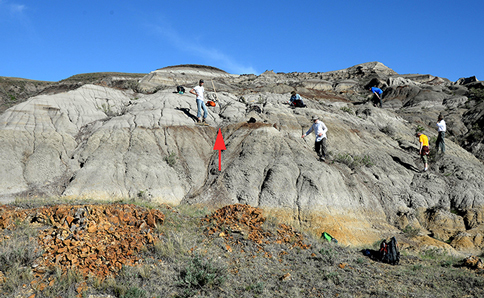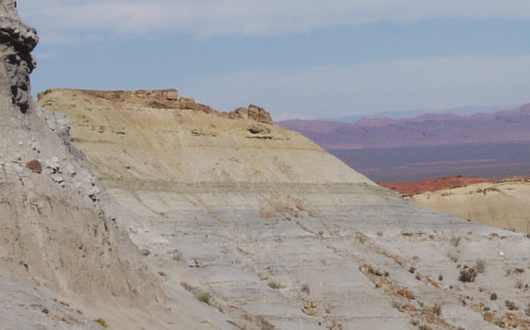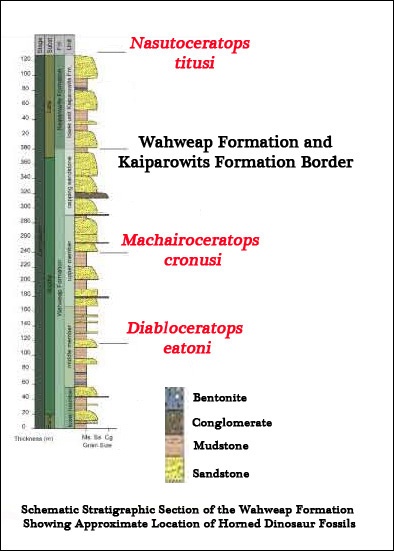Defining Stunning Geologic Formations, Members and Horizons
What are Geologic Formations, Members and Horizons?
In amongst all the emails we receive on a daily basis, our team members get asked lots of questions about dinosaurs and prehistoric animals. However, at the start of the week, we received one intriguing email that did not ask about ancient animals, fossils or anything to do with the Dinosauria, the sender simply wanted to know how rock formations are defined. That’s a good question, so we thought we would publish a brief explanation listing the important things to consider. Here is the Everything Dinosaur guide to defining geologic formations.
What in Geology is a Horizon?
Most, but not all fossils are found in sedimentary rocks and these are usually deposited in layers. A horizon is a distinctive area within a number of other layers, a thin bed of strata that has characteristic features, such as being associated with a particular set of fossils, or if it is composed of different sized grains of sandstone or perhaps it has a different colour to the preceding and succeeding layers. Essentially, it highlights a definite change in deposition, it has a different lithology (the physical description of the unit of rock).
Identifying Fossil-Bearing Horizons in the Dinosaur Provincial Park (Alberta, Canada)

The red arrow in the picture highlights the Mercuriceratops layer. A photograph demonstrating fossil-bearing horizons with strata.
Picture credit: Professor Phil Currie (University of Alberta)
The picture above shows the location of the fossilised remains of a new species of horned dinosaur.
If the horizon contains distinctive fossils, then these fossils can help to give the relative age of that part of the rock sequence. The fossils themselves, can help geologists to map a biostratigraphical sequence. If layers of volcanic ash are associated with a specific rock sequence, then the zircon crystals and other deposits can help to date the rock layers found in association with the ash (radiometric dating). Individual components of strata are referred to as beds, a bed marks the smallest division of a geological unit.
Defining a Member
In geology, a “Member” is a group of horizons and beds that can be united together as they share common characteristics and features that help to distinguish this group from the surrounding rocks. The strata have distinct lithographic characteristics. In the picture below, different coloured layers can be seen in the landscape, (most probably volcanic ash deposits), these represent horizons, but on the top of the cliff is a very different type of rock, a brown coloured unit that likely represents a different member.
Different Distinct Bands of Rock can be Seen with a Harder, Overlying Coarser Sandstone Member On Top
Defining Geologic Formations
A “Formation” is the basic unit of rock measurement in geology. It consists of similar rock types that were originally continuous and created by related depositional events and environments. A geologic formation is characterised by its composition, how it looks and how it is exposed over an area. In older texts, a formation is defined as being large enough to be highlighted on a map with a scale of one inch to a mile. Essentially, a formation must be distinct enough so that a geologist can readily discern it from other rock formations.
Hence, we have terms such as the Morrison Formation, a term given to a distinctive depositional sequence of Upper Jurassic sandstones, limestones, silts and mudstone centred in the Western United States but with outcrops within other parts of the America to, or the Wahweap Formation, Upper Cretaceous strata associated with Utah and Arizona.
A Stratigraphic Profile of the Wahweap and the Kaiparowits Formation (Western United States)
Picture credit: Lund et al (PLOS ONE) with additional annotation by Everything Dinosaur
The Lithostratigraphic Hierarchy
Just like in taxonomy, there is a ranking system for rock units in geology, this is termed the lithostratigraphic hierarchy. Formations for example, are united in “Groups” and above them comes “Supergroups”, the biggest, commonly recognised rock unit.
The main lithostratigraphic ranks in this hierarchy consist of (in order from largest to smallest)
- Supergroup
- Group
- Formation
- Member
- Horizon
- Bed
Separate units are usually named after a geographical locality, typically the place where the exposures were first described.
Visit Everything Dinosaur’s website: Everything Dinosaur.



